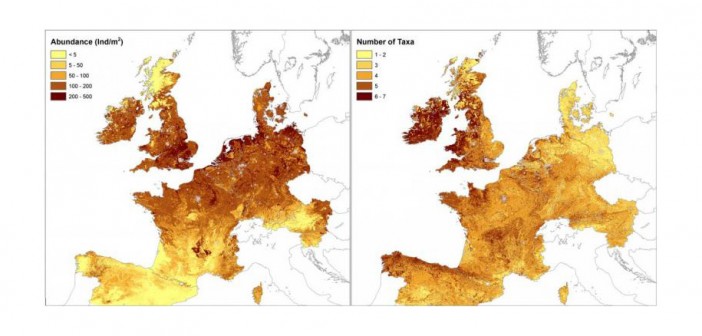In 2015, as part of the International Year of Soils, scientists from eight different countries, including Spain, created the first large-scale European map of earthworm abundance and diversity in addition to distribution maps of widespread earthworm species such as Aporrectodea caliginosa and Lumbricus terrestris.
In recent years, “the classification of edaphic invertebrates and their distribution patterns have not received priority for funding, meaning that a lot of information from unpublished studies has not been digitised,” comments María Jesús Briones, a researcher at the University of Vigo and one of the authors of the study. In addition, these animals -affected by the use of soils- were not well documented in the records, but their presence and role in the ecosystem greatly enhance the quality of the soils where they live.
France, Ireland and Germany were the top countries to gather information regarding the biodiversity of these invertebrates -France collected data from 1,423 locations- thanks to access to substantial funding to study the entire territory. On the other hand, there is still a lot to be done in Spain. “The study is the first step to creating a database of European earthworms, which needs to be improved on,” point out the authors. Given its environmental importance -being a reflection of the quality of their habitat-, the study strives for a better understanding of these invertebrate communities in addition to improved monitoring.

Photo Caption: The new worm map
The post First European earthworm map appeared first on Hort News on 26 February 2016.